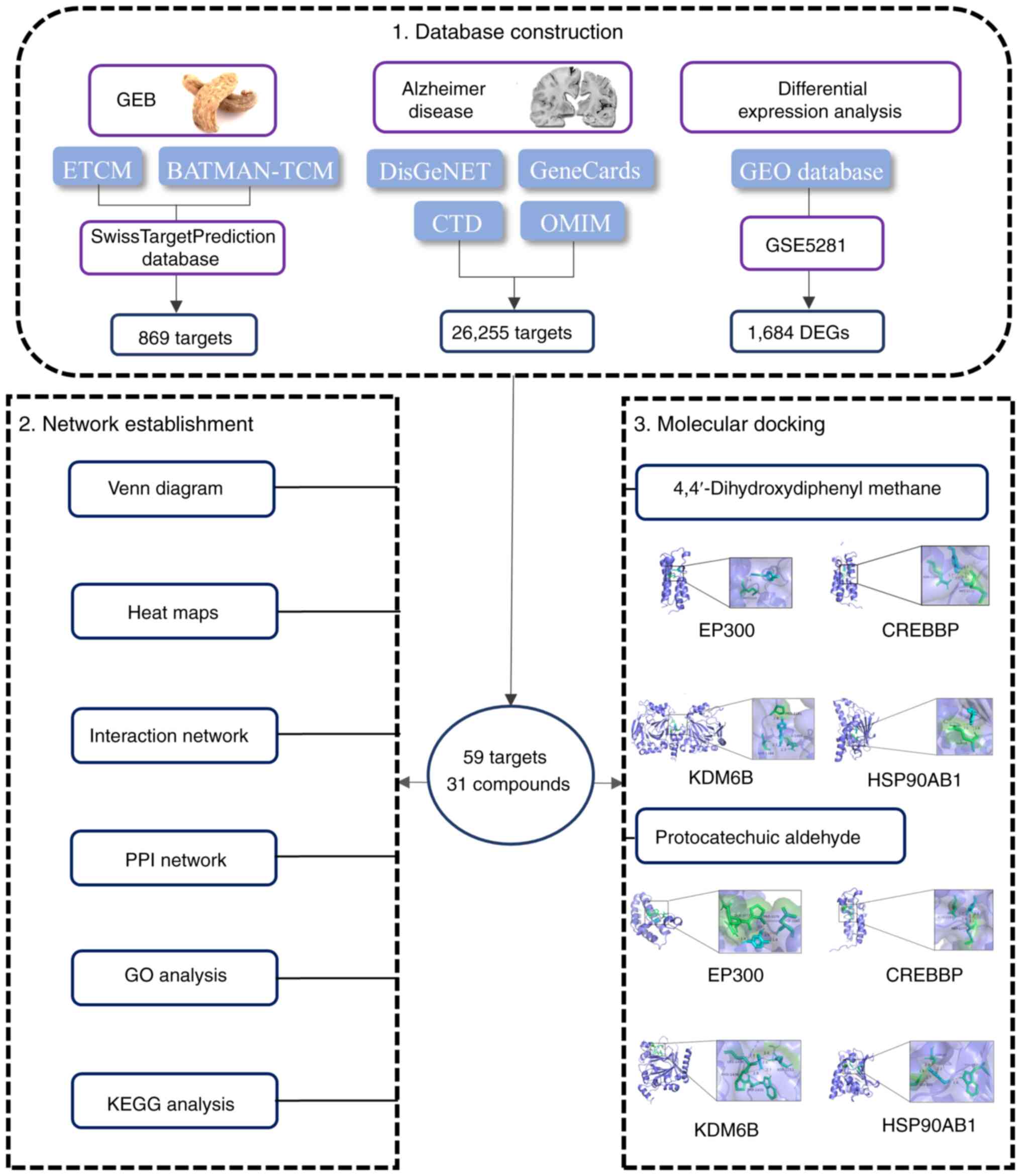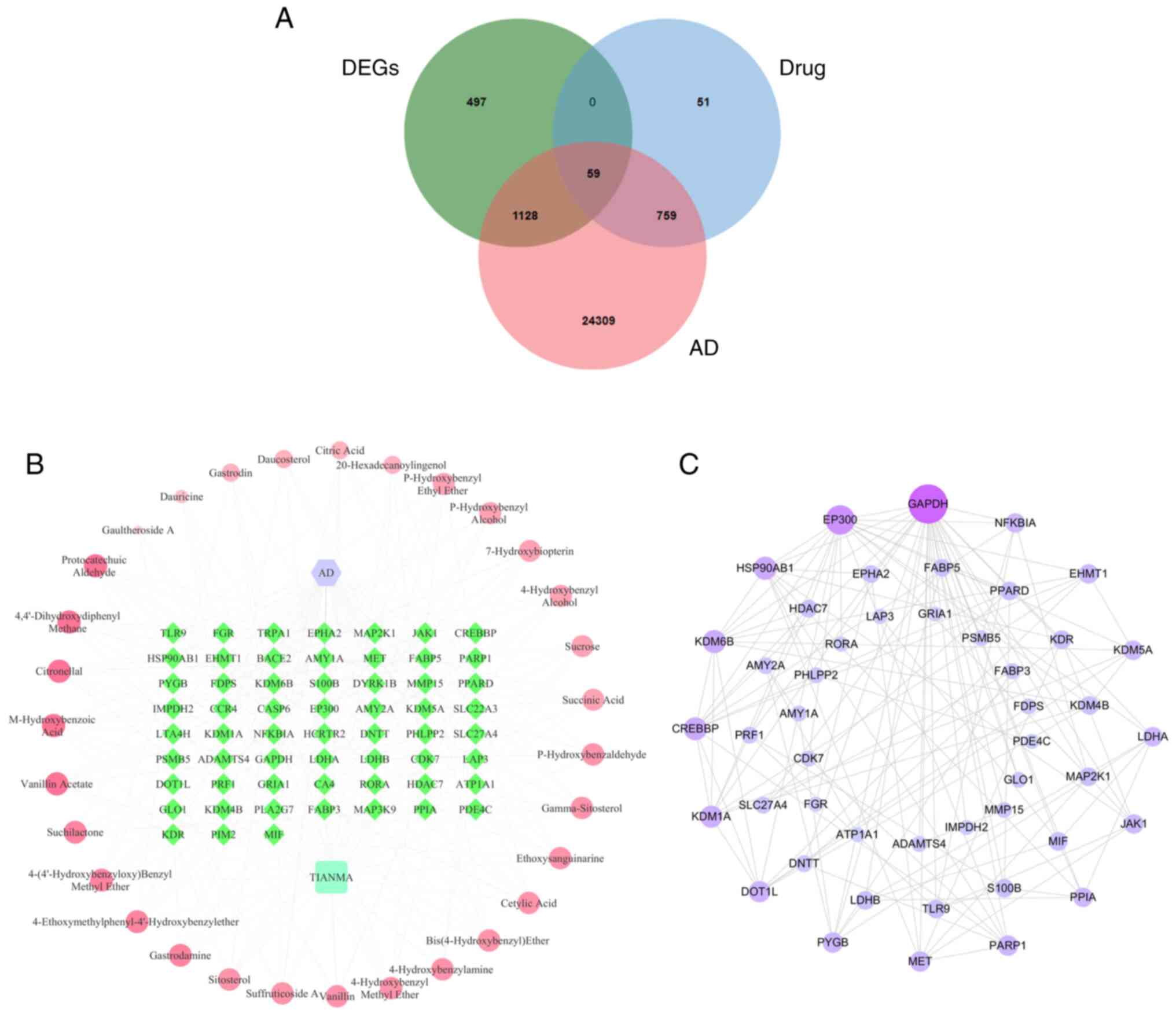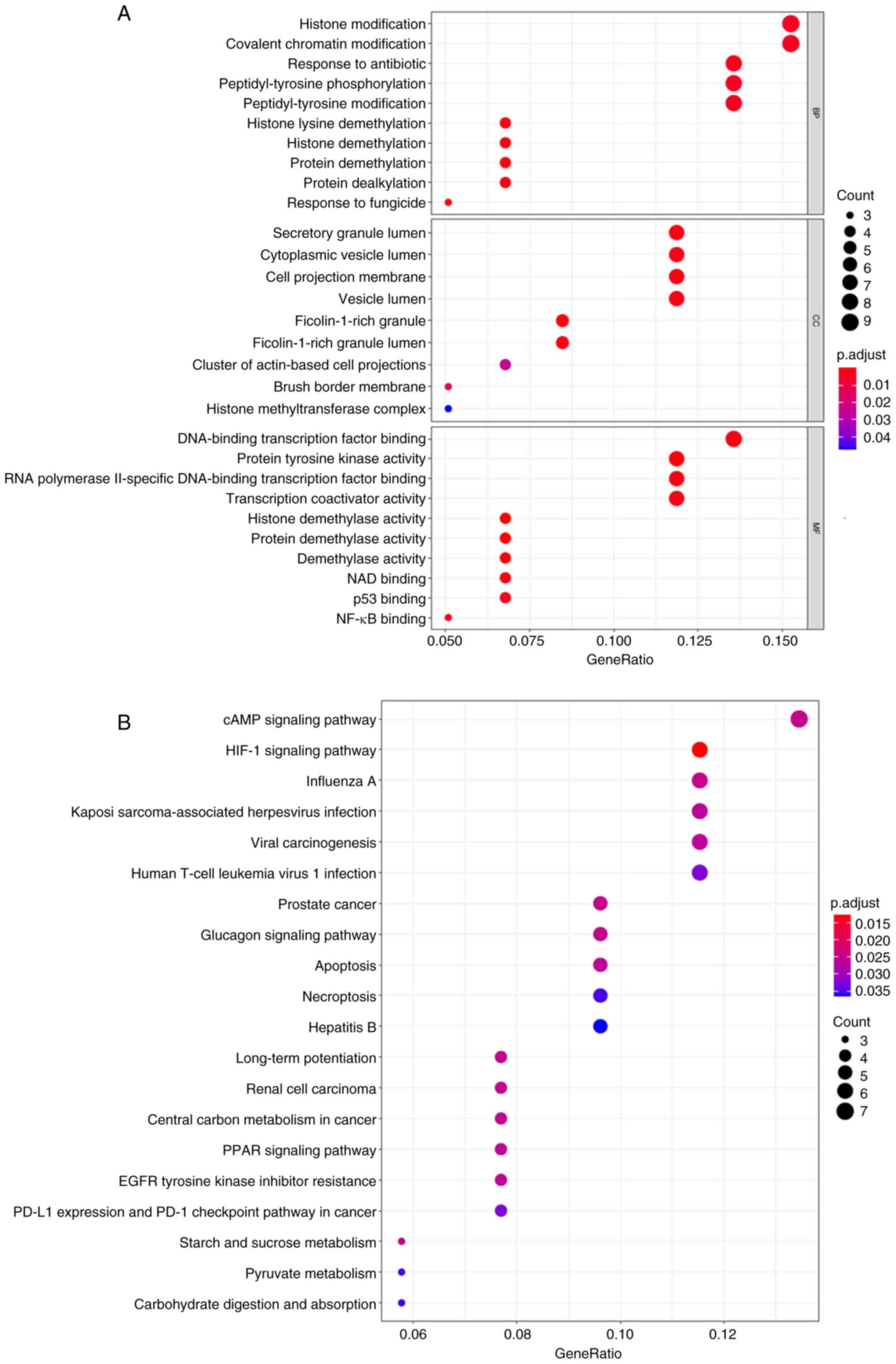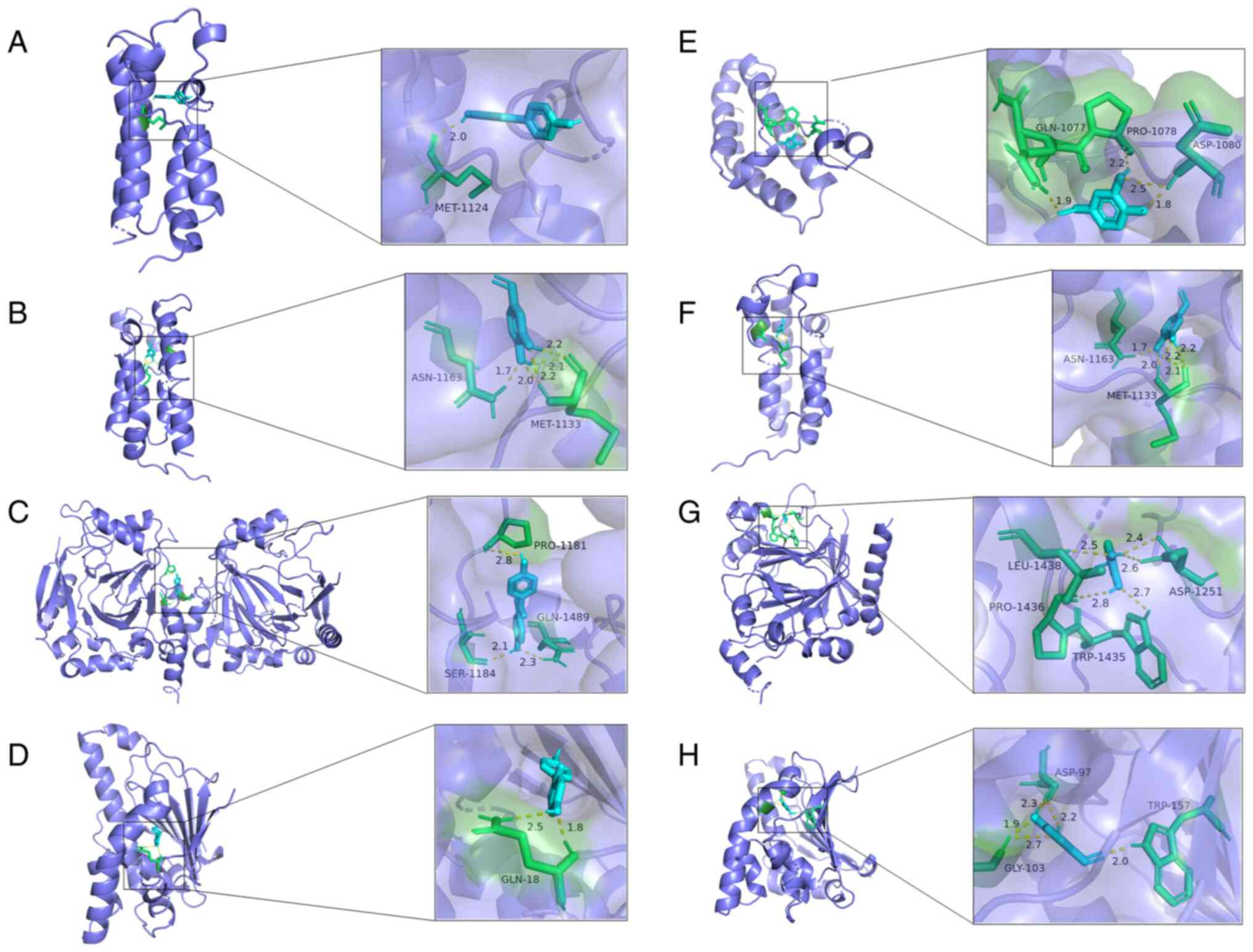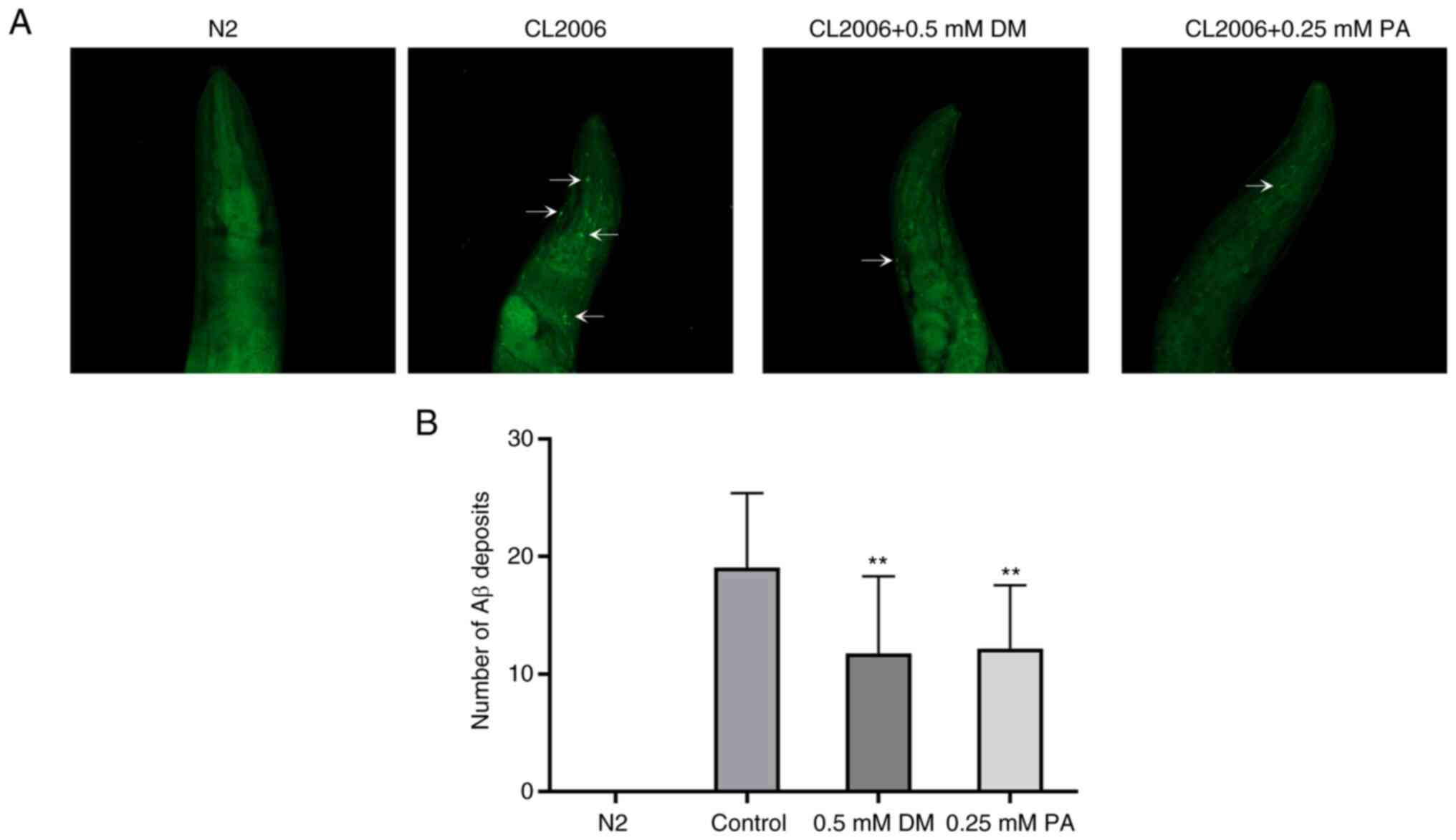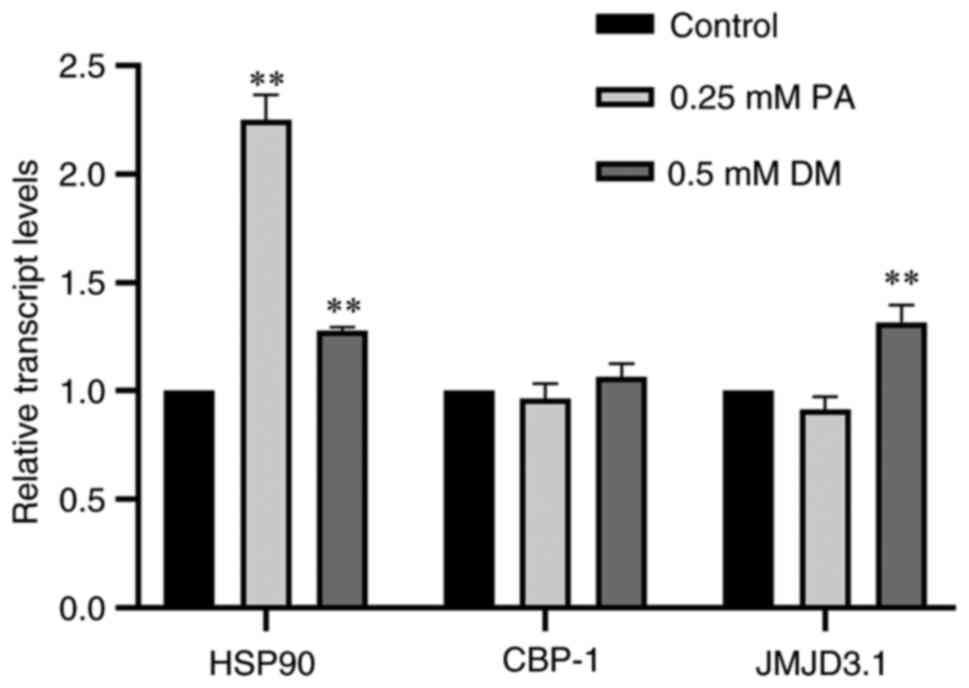|
1
|
Solanki I, Parihar P and Parihar MS:
Neurodegenerative diseases: From available treatments to
prospective herbal therapy. Neurochem Int. 95:100–108.
2016.PubMed/NCBI View Article : Google Scholar
|
|
2
|
Kent SA, Spires-Jones TL and Durrant CS:
The physiological roles of tau and Aβ: implications for Alzheimer's
disease pathology and therapeutics. Acta Neuropathol. 140:417–447.
2020.PubMed/NCBI View Article : Google Scholar
|
|
3
|
de Caires S and Steenkamp V: Use of
Yokukansan (TJ-54) in the treatment of neurological disorders: A
review. Phytother Res. 24:1265–1270. 2010.PubMed/NCBI View
Article : Google Scholar
|
|
4
|
The Pharmacopoeia Commission of PRC.
Pharmacopoeia of the People's Republic of China. Volume 1. 10th
Edition. China Medical Science and Technology Press, Beijing,
pp58-59, 2015.
|
|
5
|
Lin YE, Lin CH, Ho EP, Ke YC, Petridi S,
Elliott CJ, Sheen LY and Chien CT: Glial Nrf2 signaling mediates
the neuroprotection exerted by Gastrodia elata Blume in
Lrrk2-G2019S Parkinson's disease. Elife. 10(e73753)2021.PubMed/NCBI View Article : Google Scholar
|
|
6
|
Kim HJ, Moon KD, Lee DS and Lee SH: Ethyl
ether fraction of Gastrodia elata Blume protects amyloid beta
peptide-induced cell death. J Ethnopharmacol. 84:95–98.
2003.PubMed/NCBI View Article : Google Scholar
|
|
7
|
Park YM, Lee BG, Park SH, Oh HG, Kang YG,
Kim OJ, Kwon LS, Kim YP, Choi MH, Jeong YS, et al: Prolonged oral
administration of Gastrodia elata extract improves spatial learning
and memory of scopolamine-treated rats. Lab Anim Res. 31:69–77.
2015.PubMed/NCBI View Article : Google Scholar
|
|
8
|
Wang D, Wang Q, Chen R, Yang S, Li Z and
Feng Y: Exploring the effects of Gastrodia elata Blume on the
treatment of cerebral ischemia-reperfusion injury using
UPLC-Q/TOF-MS-based plasma metabolomics. Food Funct. 10:7204–7215.
2019.PubMed/NCBI View Article : Google Scholar
|
|
9
|
Lu KH, Ou GL, Chang HP, Chen WC, Liu SH
and Sheen LY: Safety evaluation of water extract of Gastrodia elata
Blume: Genotoxicity and 28-day oral toxicity studies. Regul Toxicol
Pharmacol. 114(104657)2020.PubMed/NCBI View Article : Google Scholar
|
|
10
|
Manavalan A, Ramachandran U, Sundaramurthi
H, Mishra M, Sze SK, Hu JM, Feng ZW and Heese K: Gastrodia elata
Blume (tianma) mobilizes neuro-protective capacities. Int J Biochem
Mol Biol. 3:219–241. 2012.PubMed/NCBI
|
|
11
|
Ramachandran U, Manavalan A, Sundaramurthi
H, Sze SK, Feng ZW, Hu JM and Heese K: Tianma modulates proteins
with various neuro-regenerative modalities in differentiated human
neuronal SH-SY5Y cells. Neurochem Int. 60:827–836. 2012.PubMed/NCBI View Article : Google Scholar
|
|
12
|
Zhang JS, Zhou SF, Wang Q, Guo JN, Liang
HM, Deng JB and He WY: Gastrodin suppresses BACE1 expression under
oxidative stress condition via inhibition of the PKR/eIF2α pathway
in Alzheimer's disease. Neuroscience. 325:1–9. 2016.PubMed/NCBI View Article : Google Scholar
|
|
13
|
Liu ZH, Hu HT, Feng GF, Zhao ZY and Mao
NY: Protective effects of gastrodin on the cellular model of
Alzheimer's disease induced by Abeta25-35. Sichuan Da Xue Xue Bao
Yi Xue Ban. 36:537–540. 2005.PubMed/NCBI(In Chinese).
|
|
14
|
Liu Y, Lu YY, Huang L, Shi L, Zheng ZY,
Chen JN, Qu Y, Xiao HT, Luo HR and Wu GS: Para-hydroxybenzyl
alcohol delays the progression of neurodegenerative diseases in
models of caenorhabditis elegans through activating multiple
cellular protective pathways. Oxid Med Cell Longev.
2022(8986287)2022.PubMed/NCBI View Article : Google Scholar
|
|
15
|
Ding Y, Bao X, Lao L, Ling Y, Wang Q and
Xu S: p-Hydroxybenzyl alcohol prevents memory deficits by
increasing neurotrophic factors and decreasing inflammatory factors
in a mice model of Alzheimer's disease. J Alzheimers Dis.
67:1007–1019. 2019.PubMed/NCBI View Article : Google Scholar
|
|
16
|
Mishra M, Huang J, Lee YY, Chua DSK, Lin
X, Hu JM and Heese K: Gastrodia elata modulates amyloid precursor
protein cleavage and cognitive functions in mice. Biosci Trends.
5:129–138. 2011.PubMed/NCBI View Article : Google Scholar
|
|
17
|
Hopkins AL: Network pharmacology. Nat
Biotechnol. 25:1110–1111. 2007.PubMed/NCBI View Article : Google Scholar
|
|
18
|
Liang WS, Dunckley T, Beach TG, Grover A,
Mastroeni D, Walker DG, Caselli RJ, Kukull WA, McKeel D, Morris JC,
et al: Gene expression profiles in anatomically and functionally
distinct regions of the normal aged human brain. Physiol Genomics.
28:311–322. 2007.PubMed/NCBI View Article : Google Scholar
|
|
19
|
Yang X, Guan Y, Yan B, Xie Y, Zhou M, Wu
Y, Yao L, Qiu X, Yan F, Chen Y and Huang L: Evidence-based
complementary and alternative medicine bioinformatics approach
through network pharmacology and molecular docking to determine the
molecular mechanisms of Erjing pill in Alzheimer's disease. Exp
Ther Med. 22(1252)2021.PubMed/NCBI View Article : Google Scholar
|
|
20
|
Li S and Zhang B: Traditional Chinese
medicine network pharmacology: Theory, methodology and application.
Chin J Nat Med. 11:110–120. 2013.PubMed/NCBI View Article : Google Scholar
|
|
21
|
Daina A, Michielin O and Zoete V:
SwissTargetPrediction: Updated data and new features for efficient
prediction of protein targets of small molecules. Nucleic Acids
Res. 47:W357–W364. 2019.PubMed/NCBI View Article : Google Scholar
|
|
22
|
Piñero J, Ramírez-Anguita JM,
Saüch-Pitarch J, Ronzano F, Centeno E, Sanz F and Furlong LI: The
DisGeNET knowledge platform for disease genomics: 2019 update.
Nucleic Acids Res. 48:D845–D855. 2020.PubMed/NCBI View Article : Google Scholar
|
|
23
|
Piñero J, Bravo À, Queralt-Rosinach N,
Gutiérrez-Sacristán A, Deu-Pons J, Centeno E, García-García J, Sanz
F and Furlong LI: DisGeNET: A comprehensive platform integrating
information on human disease-associated genes and variants. Nucleic
Acids Res. 45:D833–D839. 2017.PubMed/NCBI View Article : Google Scholar
|
|
24
|
Ritchie ME, Phipson B, Wu D, Hu Y, Law CW,
Shi W and Smyth GK: limma powers differential expression analyses
for RNA-sequencing and microarray studies. Nucleic Acids Res.
43(e47)2015.PubMed/NCBI View Article : Google Scholar
|
|
25
|
Otasek D, Morris JH, Bouças J, Pico AR and
Demchak B: Cytoscape Automation: Empowering workflow-based network
analysis. Genome Biol. 20(185)2019.PubMed/NCBI View Article : Google Scholar
|
|
26
|
Kolde R: Pheatmap: Pretty Heatmaps. R
Package Version. CRAN Repository, 2012.
|
|
27
|
Yu G, Wang LG, Han Y and He QY:
clusterProfiler: An R package for comparing biological themes among
gene clusters. OMICS. 16:284–287. 2012.PubMed/NCBI View Article : Google Scholar
|
|
28
|
Morris GM, Huey R, Lindstrom W, Sanner MF,
Belew RK, Goodsell DS and Olson AJ: AutoDock4 and AutoDockTools4:
Automated docking with selective receptor flexibility. J Comput
Chem. 30:2785–2791. 2009.PubMed/NCBI View Article : Google Scholar
|
|
29
|
Morris GM, Huey R and Olson AJ: Using
AutoDock for ligand-receptor docking. Curr Protoc Bioinformatics.
8(Unit 8.14)2008.PubMed/NCBI View Article : Google Scholar
|
|
30
|
Yang Y, He Y, Wei X, Wan H, Ding Z, Yang J
and Zhou H: Network pharmacology and molecular docking-based
mechanism study to reveal the protective effect of salvianolic acid
C in a rat model of ischemic Stroke. Front Pharmacol.
12(799448)2021.PubMed/NCBI View Article : Google Scholar
|
|
31
|
Chen XY, Liao DC, Sun ML, Cui XH and Wang
HB: Essential oil of acorus tatarinowii Schott Ameliorates
Aβ-Induced toxicity in caenorhabditis elegans through an autophagy
pathway. Oxid Med Cell Longev. 2020(3515609)2020.PubMed/NCBI View Article : Google Scholar
|
|
32
|
Zhi D, Wang D, Yang W, Duan Z, Zhu S, Dong
J, Wang N, Wang N, Fei D, Zhang Z, et al: Dianxianning improved
amyloid β-induced pathological characteristics partially through
DAF-2/DAF-16 insulin like pathway in transgenic C. elegans. Sci
Rep. 7(11408)2017.PubMed/NCBI View Article : Google Scholar
|
|
33
|
DanQing L, YuJie G, ChengPeng Z, HongZhi
D, Yi H, BiSheng H and Yan C: N-butanol extract of Hedyotis diffusa
protects transgenic Caenorhabditis elegans from Aβ-induced
toxicity. Phytother Res. 35:1048–1061. 2021.PubMed/NCBI View Article : Google Scholar
|
|
34
|
Livak KJ and Schmittgen TD: Analysis of
relative gene expression data using real-time quantitative PCR and
the 2(-Delta Delta C(T)) method. Methods. 25:402–408.
2001.PubMed/NCBI View Article : Google Scholar
|
|
35
|
Williams K, Christensen J, Rappsilber J,
Nielsen AL, Johansen JV and Helin K: The histone lysine demethylase
JMJD3/KDM6B is recruited to p53 bound promoters and enhancer
elements in a p53 dependent manner. PLoS One.
9(e96545)2014.PubMed/NCBI View Article : Google Scholar
|
|
36
|
Mathies LD, Lindsay JH, Handal AP,
Blackwell GG, Davies AG and Bettinger JC: SWI/SNF complexes act
through CBP-1 histone acetyltransferase to regulate acute
functional tolerance to alcohol. BMC Genomics.
21(646)2020.PubMed/NCBI View Article : Google Scholar
|
|
37
|
Eckl J, Sima S, Marcus K, Lindemann C and
Richter K: Hsp90-downregulation influences the heat-shock response,
innate immune response and onset of oocyte development in
nematodes. PLoS One. 12(e0186386)2017.PubMed/NCBI View Article : Google Scholar
|
|
38
|
Ng CF, Ko CH, Koon CM, Xian JW, Leung PC,
Fung KP, Chan HYE and Lau CBS: The aqueous extract of rhizome of
gastrodia elata protected drosophila and PC12 cells against
beta-amyloid-induced neurotoxicity. Evid Based Complement Alternat
Med. 2013(516741)2013.PubMed/NCBI View Article : Google Scholar
|
|
39
|
Fasina OB, Wang J, Mo J, Osada H, Ohno H,
Pan W, Xiang L and Qi J: Gastrodin from gastrodia elata enhances
cognitive function and neuroprotection of AD mice via the
regulation of gut microbiota composition and inhibition of neuron
inflammation. Front Pharmacol. 13(814271)2022.PubMed/NCBI View Article : Google Scholar
|
|
40
|
Narayan P and Dragunow M: Alzheimer's
disease and histone code alterations. Adv Exp Med Biol.
978:321–336. 2017.PubMed/NCBI View Article : Google Scholar
|
|
41
|
Li H, Yang S, Wu J, Ji L, Zhu L, Cao L,
Huang J, Jiang Q, Wei J, Liu M, et al: cAMP/PKA signaling pathway
contributes to neuronal apoptosis via regulating IDE expression in
a mixed model of type 2 diabetes and Alzheimer's disease. J Cell
Biochem. 119:1616–1626. 2018.PubMed/NCBI View Article : Google Scholar
|
|
42
|
Gorenberg EL and Chandra SS: The role of
Co-chaperones in synaptic proteostasis and neurodegenerative
disease. Front Neurosci. 11(248)2017.PubMed/NCBI View Article : Google Scholar
|
|
43
|
Ramos E, Romero A, Marco-Contelles J,
López-Muñoz F and Del Pino J: Modulation of heat shock response
proteins by ASS234, targeted for neurodegenerative diseases
therapy. Chem Res Toxicol. 31:839–842. 2018.PubMed/NCBI View Article : Google Scholar
|
|
44
|
Li J, Xu C, Zhang J, Jin C, Shi X, Zhang
C, Jia S, Xu J, Gui X, Xing L, et al: Identification of
miRNA-target gene pairs in the parietal and frontal lobes of the
brain in patients with alzheimer's disease using bioinformatic
analyses. Neurochem Res. 46:964–979. 2021.PubMed/NCBI View Article : Google Scholar
|
|
45
|
Gonzalez-Rodriguez M, Villar-Conde S,
Astillero-Lopez V, Villanueva-Anguita P, Ubeda-Banon I,
Flores-Cuadrado A, Martinez-Marcos A and Saiz-Sanchez D:
Neurodegeneration and astrogliosis in the human CA1 hippocampal
subfield are related to hsp90ab1 and bag3 in Alzheimer's disease.
Int J Mol Sci. 23(165)2021.PubMed/NCBI View Article : Google Scholar
|
|
46
|
Jeong HO, Park D, Im E, Lee J, Im DS and
Chung HY: Determination of the mechanisms that cause sarcopenia
through cDNA microarray. J Frailty Aging. 6:97–102. 2017.PubMed/NCBI View Article : Google Scholar
|
|
47
|
Tang D, Lu Y, Zuo N, Yan R, Wu C, Wu L,
Liu S and He Y: The H3K27 demethylase controls the lateral line
embryogenesis of zebrafish. Cell Biol Toxicol.
29:10.1007/s10565-021-09669-y. 2021.PubMed/NCBI View Article : Google Scholar
|
|
48
|
Kim J, Lee KP, Beak S, Kang HR, Kim YK and
Lim K: Effect of black chokeberry on skeletal muscle damage and
neuronal cell death. J Exerc Nutrition Biochem. 23:26–31.
2019.PubMed/NCBI View Article : Google Scholar
|
|
49
|
Min SW, Chen X, Tracy TE, Li Y, Zhou Y,
Wang C, Shirakawa K, Minami SS, Defensor E, Mok SA, et al: Critical
role of acetylation in tau-mediated neurodegeneration and cognitive
deficits. Nat Med. 21:1154–1162. 2015.PubMed/NCBI View Article : Google Scholar
|
|
50
|
Lu X, Deng Y, Yu D, Cao H, Wang L, Liu L,
Yu C, Zhang Y, Guo X and Yu G: Histone acetyltransferase p300
mediates histone acetylation of PS1 and BACE1 in a cellular model
of Alzheimer's disease. PLoS One. 9(e103067)2014.PubMed/NCBI View Article : Google Scholar
|
|
51
|
Barral S, Reitz C, Small SA and Mayeux R:
Genetic variants in a ‘cAMP element binding protein’
(CREB)-dependent histone acetylation pathway influence memory
performance in cognitively healthy elderly individuals. Neurobiol
Aging. 35:2881.e2887–2881.e2810. 2014.PubMed/NCBI View Article : Google Scholar
|
|
52
|
Kim MJ, Park SY, Kim Y, Jeon S, Cha MS,
Kim YJ and Yoon HG: Beneficial effects of a combination of curcuma
longa L. and Citrus junos against beta-amyloid peptide-induced
neurodegeneration in mice. J Med Food. 25:12–23. 2022.PubMed/NCBI View Article : Google Scholar
|
|
53
|
Akinsiku OE, Soremekun OS and Soliman MES:
Update and potential opportunities in CBP [Cyclic Adenosine
Monophosphate (cAMP) Response Element-Binding Protein
(CREB)-Binding Protein] research using computational techniques.
Protein J. 40:19–27. 2021.PubMed/NCBI View Article : Google Scholar
|
|
54
|
Scheltens P, De Strooper B, Kivipelto M,
Holstege H, Chételat G, Teunissen CE, Cummings J and van der Flier
WM: Alzheimer's disease. Lancet. 397:1577–1590. 2021.PubMed/NCBI View Article : Google Scholar
|
|
55
|
Paul D, Chipurupalli S, Justin A, Raja K
and Mohankumar SK: Caenorhabditis elegans as a possible model to
screen anti-Alzheimer's therapeutics. J Pharmacol Toxicol Methods.
106(106932)2020.PubMed/NCBI View Article : Google Scholar
|
|
56
|
Link CD: Expression of human beta-amyloid
peptide in transgenic Caenorhabditis elegans. Proc Natl Acad Sci
USA. 92:9368–9372. 1995.PubMed/NCBI View Article : Google Scholar
|
|
57
|
Fay DS, Fluet A, Johnson CJ and Link CD:
In vivo aggregation of beta-amyloid peptide variants. J Neurochem.
71:1616–1625. 1998.PubMed/NCBI View Article : Google Scholar
|
|
58
|
Morcos M and Hutter H: The model
Caenorhabditis elegans in diabetes mellitus and Alzheimer's
disease. J Alzheimers Dis. 16:897–908. 2009.PubMed/NCBI View Article : Google Scholar
|
|
59
|
Zhu S, Li H, Dong J, Yang W, Liu T, Wang
Y, Wang X, Wang M and Zhi D: Rose essential oil delayed Alzheimer's
disease-like symptoms by SKN-1 pathway in C. elegans. J Agric Food
Chem. 65:8855–8865. 2017.PubMed/NCBI View Article : Google Scholar
|















